Juki sewing machines: pros and cons, models, choices
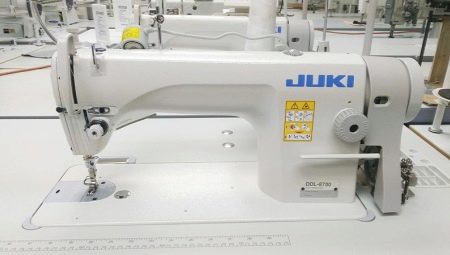
The ability to dress beautifully and stylishly is important for any person, especially a woman. But suitable clothes cannot always be found in a store - they may not be satisfied with the color, style, material, size, price, etc. And even if you like everything, the model may not fit perfectly on the figure. The ability to sew will allow a woman to be always well dressed and dress her loved ones. And the main assistant in this is the sewing machine. We will talk about the pros and cons of similar Juki products, consider various models and give advice on choosing.
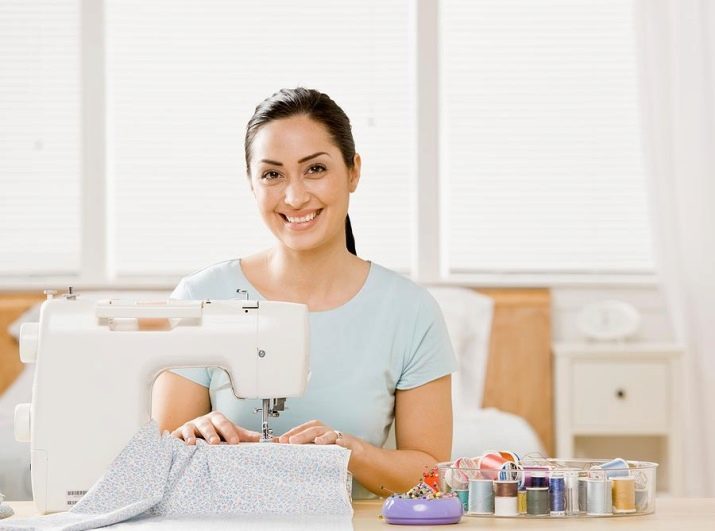
A bit of history
It is believed that Leonardo da Vinci created the first draft of a complex mechanism, but it remained on paper. The first patent for a sewing machine was obtained in Germany in 1755. And the units became widespread only in the middle of the 19th century in the USA, where they began to be produced on an industrial scale.
In 1938, the history of the Japanese corporation Juki began, which today produces the largest number of sewing machines in the world. Gigantic production began with a small factory that produced home cars that allowed women in the conditions of military and post-war Japan to dress themselves and their families. Due to their excellent quality, the company's products were in high demand, and in 1947 serial production began. In 1953, Juki began to produce industrial sewing equipment - machines, and later overlocks.
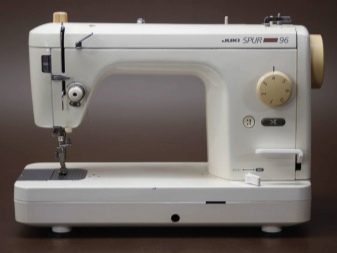

One of the reasons for the company's success is own research institute. New technologies are developed here and are immediately tested in production. According to the results of tests and tests, the necessary corrections are made, shortcomings are eliminated, after which the new product is introduced into production.
Juki's innovative, high-quality and affordable products are in stable demand - the company supplies products to more than 200 countries around the world.
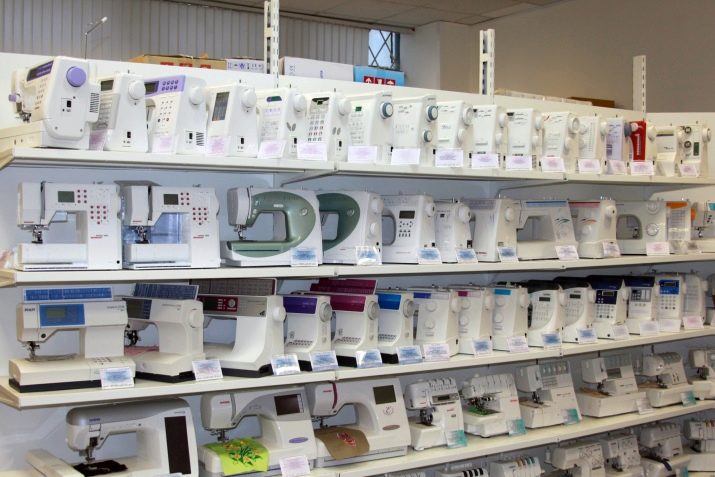
Advantages and disadvantages
Due to their excellent quality, reliability and low price, Juki sewing machines are recognized by both ordinary housewives who are fond of sewing and professional tailors. Among the main advantages of these machines, experts and consumers distinguish:
- ease of use;
- tolerable noise level;
- bright backlight that allows you to sew in the dark;
- high functionality - on these machines you can make a huge variety of stitches, buttonholes and other operations;
- the control panel is very convenient and intuitive, there are Russian-language settings;
- a comfortable foot pedal and a knee lever, which greatly facilitates the sewing process;
- the ability to automatically cut the thread and thread it into the needle;
- "Smart" software control;
- you can adjust the speed of work, sew fabrics of different thickness;
- there is an overload protection function;
- Japanese assembly and customization, very high quality components;
- the company gives up to 2 years warranty for its products.
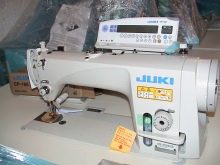
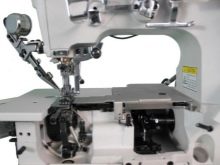
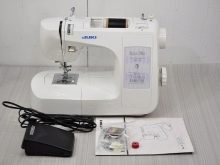
The Juki sewing machines also have a number of disadvantages. Most often, consumers mention:
- low speed of work;
- a rather complex instruction, which also contains a number of errors;
- if necessary, repairs - expensive components;
- fragile needle threader;
- it takes a long time to reconfigure the machine for ordinary flat seams after overlock seams;
- it is inconvenient to sew thin fabrics or mesh fabrics, etc.
This list shows that the disadvantages of the corporation's products are minor. There are many more advantageswhich is why Juki is the world leader in sewing machines.
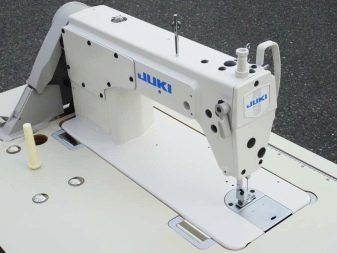
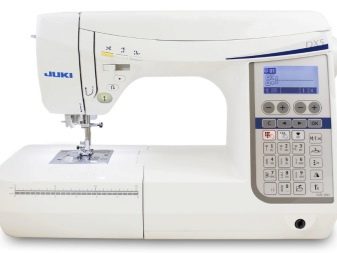
Product range
As already mentioned, Juki manufactures both household sewing machines and industrial equipment, as well as overlocks. The variety of products is huge - from mechanical to electronic components. There are quite a few models on the Russian market, below the story will be about the most popular of them.
- Electronic sewing machine Juki HZL-F600 - one of the best in the company, multifunctional and thought out to the smallest detail. The complex mechanism carries out 477 operations, is capable of performing different types of stitches (straight, zigzags, decorative) and up to 16 variants of loops, which can be changed by simply pressing the corresponding button under the LCD display. The machine is equipped with a large table to facilitate the process of sewing large parts, and a drawer for storing accessories.
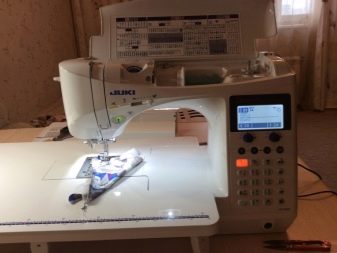
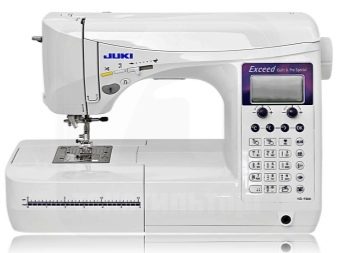
- Electronic model Juki HZL-G110 performs 180 operations, is able to perform the following types of stitches: straight, zigzag, blind, satin, patchwork, decorative and others, as well as to embroider the alphabet. It can sew up to 900 stitches per minute.
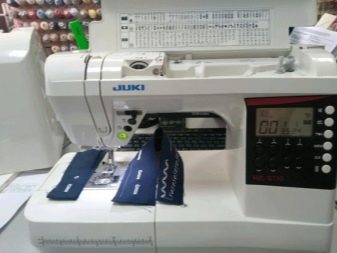

- Sewing machine Juki HZL-G-210 has 180 types of stitches (including straight, blind, zigzag and decorative, 1 alphabet), 9 options for buttonholes at maximum speed - up to 900 stitches per minute.
The choice of the required operation is carried out through push-button control.
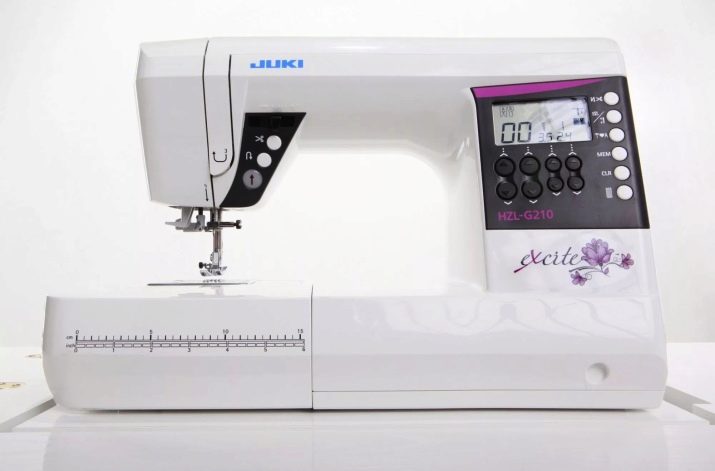
- Typewriter Juki HZL-27Z - a very convenient and versatile device that allows you to sew or repair any clothing. The electromechanical model copes well with almost all types of fabrics - from thick denim to fine silk. Able to perform 23 different stitch patterns, including straight and blind stitch, overcast, zigzag and more. This model has a removable platform, adapted for sewing narrow parts - legs and sleeves. It is also important that it works quite quietly thanks to the horizontal shuttle.
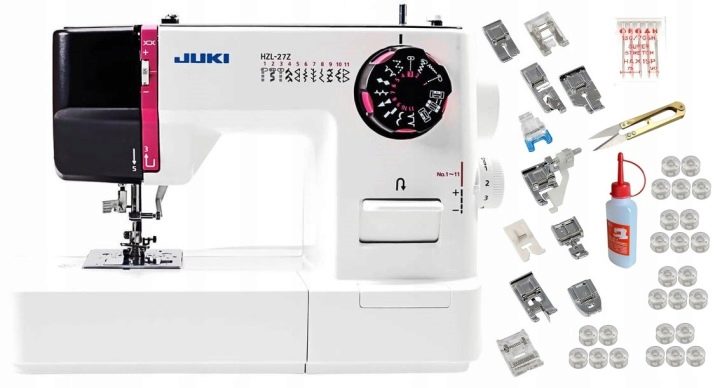
- Computerized model Juki HZL-F400 performs 405 different operations, works with various types of fabrics - from the thinnest to the most dense. At the highest speed, it can sew up to 900 stitches per minute.
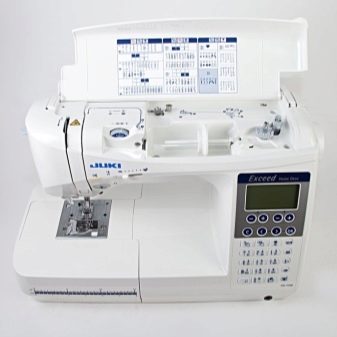
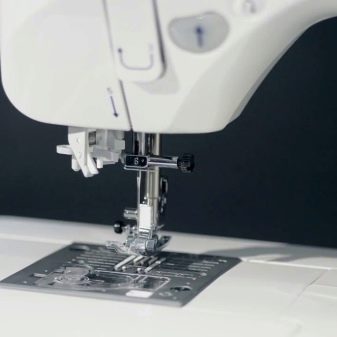
- Sewing machine Juki QM-700 Quilt Majestic - This is an electronic model created especially for creative people. It carries out 415 operations, including embroidery.Allows you to work with a wide variety of materials - from delicate fine silk to rather rough leather.
Among the types of stitches performed by the machine: straight and various zigzags, knitted and elastic, satin and patchwork, decorative and cruciform, etc.
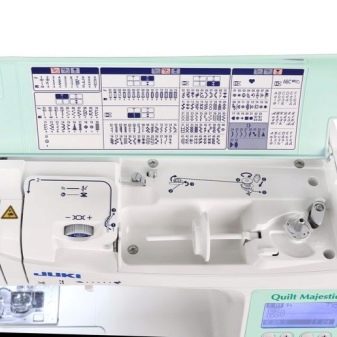
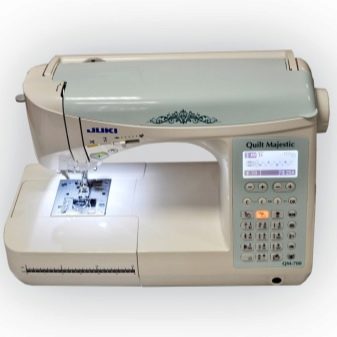
- Majestic M 200e - performs 197 operations (including 97 characters - the English alphabet, various signs and numbers), allows you to work with any kind of fabric - from thin to very dense (leather, tarpaulin, drape), control is carried out using the buttons on the right side of the machine. Working speed - up to 800 stitches per minute. Consumers also note that the machine is quite quiet.
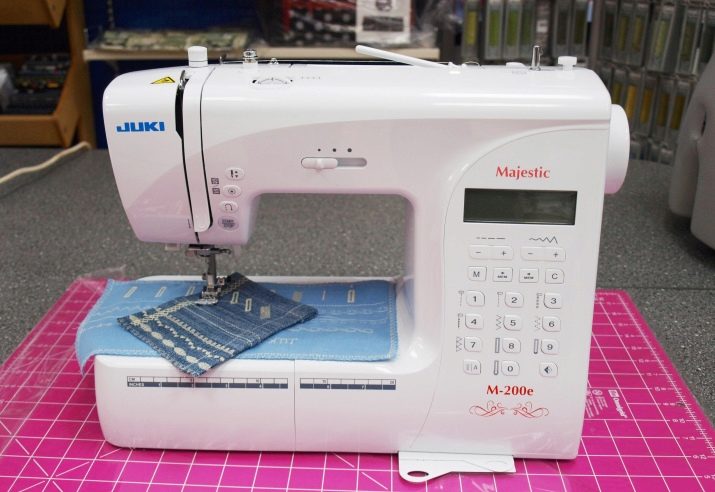
- Model Juki DDL-8100eH Is already a production machine that is used when sewing medium to heavy materials. All its mechanisms are well-tuned and adapted to work with different fabrics, and the stitching is always of high quality. The machine is distinguished by its ease of use, maintenance and adjustment. She sews at a speed of up to 4000 stitches per minute.
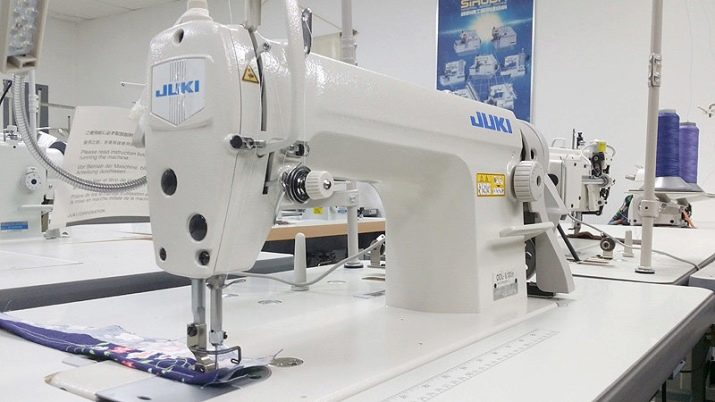
All of the above Juki cars complete with a set of feet (may differ depending on the model), foot pedal, knee lifter, sturdy plastic cover, buttonhole ripper, cleaning brush, set of needles, bobbins and a screwdriver. All of them are capable of performing a huge number of different operations - from embroidery of letters of the English and / or Russian alphabets, numbers and symbols to patchwork and quilting (patchwork sewing). When creating these machines, a horizontal shuttle mechanism was used, this allows you to make a long and even stitch.
As you can see, any Juki sewing machine has undeniable advantages. Perhaps the most important of these are excellent stitching quality, as well as reliable performance. In addition, like any Japanese company, Juki Corporation widely uses in production its innovative developments that greatly facilitate the use of the brand's products.
Review of the Juki F600 sewing machine, see below.








